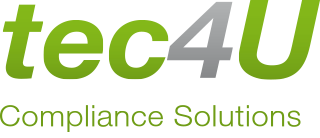With the European Deforestation Regulation (EUDR), the scope of application now extends to many industries such as mechanical engineering, construction, the recreational vehicle and automotive sectors, sanitary products, furniture, as well as packaging and publishing, since their products fall under the regulation. The due diligence requirements pose significant challenges for companies, as the newly required data is often not readily available. Many relevant sectors—such as the furniture industry (wood), the rubber industry (tires, hoses, seals), or the food industry (cocoa, coffee, oil palm)—are characterized by highly complex supply chains. Producers of raw materials often operate in Africa or South America, regions where extensive deforestation occurs to create new agricultural land. Additionally, these producers frequently lack the means to provide the required data and documentation to end customers, or the end customers obligated to comply with the EUDR have no visibility into the precise origins of their goods. Large buyers typically purchase substantial volumes consisting of hundreds or thousands of sub-lots, each originating from different plots of land.
1. EUDR Software for Collecting Relevant Data Becomes Essential
The EUDR now requires companies to gather all necessary due diligence data for every point of origin. Most companies, however, lack the internal processes and know-how to obtain this information. Moreover, the EUDR itself is an extensive and complex document with multiple obligations. Without time-consuming familiarization, substantial background knowledge, and software support, achieving error-free compliance is difficult. Software-based data collection is also essential because due diligence statements must be submitted via the EU’s digital TRACES NT information system. As the number of suppliers and EUDR-relevant products increases, the effort required to obtain, document, and transmit data grows exponentially—making the process nearly impossible without dedicated EUDR software.
2. EUDR Software Requires Integration of Requirements Into Business Processes
As a result of the new EUDR challenges, many system solutions have entered the market, often suggesting that EUDR compliance can be achieved by using software alone. However, when considering the scope and complexity of the required activities and measures, it becomes clear that an effective EUDR compliance solution must be holistic. The right software certainly plays an important role in generating data and enabling legally compliant and well-documented supplier communication. However, the real challenge for companies often arises much earlier. Knowledge of general sustainability requirements—and specifically of EUDR obligations—is frequently insufficient, and the associated process implementation is often lacking. The fact that the EUDR focuses on purchased product batches represents an almost insurmountable obstacle for many companies.
Practical approaches are needed that ensure both legal compliance and operational and economic feasibility. These approaches must be tailored to each company and integrated deeply into corporate processes. In addition to batch management, supplier management becomes a decisive factor. Supplier communication and supplier development must be aligned with EUDR requirements. Stakeholders include not only Procurement, but also Sales, Development, Quality, and Production. Only when all process owners understand how the EUDR affects their daily work—and what information or operational contributions they must provide—can a company comply with EUDR requirements.
3. EUDR Software Requires Users With Experience and Expertise
Reviewing incoming documents is similarly demanding. Since these documents are often available only in the supplier’s local language, even advanced software can only conduct a reliable review when combined with operational logic and trained users. Companies must meet all related obligations while also managing resources efficiently.
When evaluating software solutions, organizations often overlook the fact that many suppliers either cannot or will not use digital platforms to report EUDR information. To ensure these suppliers can still be reached—and their information collected in a standardized and automated way—it is essential that they have alternative ways to submit required data outside the main communication platform. Practical system solutions therefore offer structured Excel formats to facilitate this and provide support services to assist suppliers in preparing the data properly.
4. Successful EUDR Implementation = Software + Process Integration + Qualification
In summary, the success of an EUDR software solution depends on a comprehensive implementation process within the company that adheres to both system requirements and legal obligations. Furthermore, the software must provide robust functionality for both suppliers and customers to ensure flexible, customized operation and resource-efficient use. Only when these conditions are met can companies fully comply with the requirements of the EUDR.
